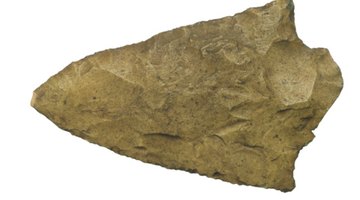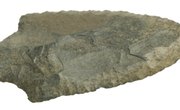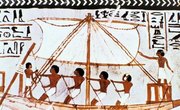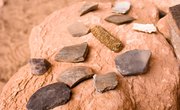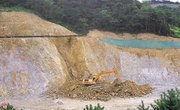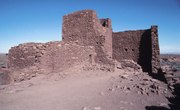Arrowheads, or projectile points, are one of the most recognizable and common Native American artifacts. They were to earlier civilizations what spent ammunition shells are to modern-day hunters and soldiers. Though some consider arrowheads mere debris of past ages, they hold great historical significance and provide valuable insight to long-gone cultures. Archaeologists have painstakingly classified Indian arrowheads into over 1,200 different types based on location, material, shape and design.
Location
Location stands as the most definitive indicator of an arrowhead’s type, as associating an artifact with the area around which it was found is often simplest for archaeologists. Specific types of arrowheads, therefore, may be found only in certain regions. For instance, outside Texas, Aguaje and Abasolo arrowheads turn up only in New Mexico, and Carrolltons are exclusive to Oklahoma.
In most cases, however, knowing where an Indian arrowhead was found is insufficient for typing. Clovis points, for example, can be dug up all over the continental U.S. and even in Alaska.
Material
The material from which an arrowhead was crafted is another important classification tool. Native Americans used material local to their area -- stone, bone, and later on, metals -- when fashioning tools. Knowing the material goes hand in hand with determining where an arrowhead came from. For instance, Hopewell arrowheads are made of Coshocton flint, an Ohio lithic, and therefore abound in and around Ohio. Chumash arrowheads are another good example. The Chumash made their arrowheads out of Monterey chert, a lithic found only in California.
Shape and Design
Further details for consideration include the arrowheads’ shape. The shape of the base is noted first, followed by its overall shape and other aspects such as notches or fluting. Notches are not only indicative of an arrowhead’s type but also of its age, as they did not appear on arrowheads until the Archaic period. Base shapes include straight (Etley), convex (Yosemite), straight to convex (Cherokee), concave (Turney), straight to concave (Stilwell) and even bifurcated (Gower).
Ten basic categories for overall shape exist: triangle (Starr), leaf (Nolan), articulate (Pelican), lanceolate (Frazier), stemmed (Alachua), contracting stem (Datil), notched (Carter), side notched (Klunk), basal notched (Ytais) and corner notched (Mackinaw).
Naming Conventions
Usually, the location of the first find serves as the basis for naming a category. Cumberland arrowheads, for example, take their name from the Cumberland River in Tennessee, and Folsom arrowheads from Folsom, New Mexico. If the name of the general location has already been used, nearby landmarks can also serve the purpose, as was the case with Lost Lake and Snake River arrowheads.
Related Articles
References
Writer Bio
Steve Johnson is an avid and passionate writer with more than five years of experience. He's written for several industries, including health, dating and Internet marketing, as well as for various websites. He holds a bachelor's degree from the University of Texas.

